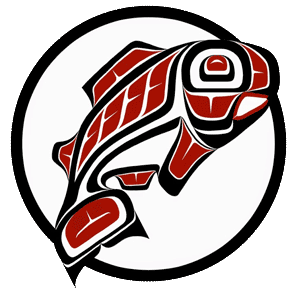Main Content
Innovation and opportunity for all
The School of Engineering & Technology (SET) at the University of Washington Tacoma prepares our students to become future leaders in a variety of computer, electrical, mechanical and civil engineering fields. Our graduates go on to develop real world solutions in embedded systems, information technology, information systems, and computer software design, development and maintenance. The curriculum provides students the theoretical grounding to promote lifelong evolution in their field while also preparing them to become effective innovators and entrepreneurs. Our promise is to equip our students for success so that they may leave with broader personal horizons and the ability to leave a meaningful community impact. Through innovative partnerships with area companies, SET helps students gain practical work experience and meet continually changing industry needs. SET provides ample services to attract and support students from diverse educational, economic and ethnic backgrounds.
The Beginning: A Computing and Software System Program
The University of Washington Tacoma Computing & Software Systems (CSS) program began in the Fall of 1999 with an inaugural cohort of 30 upper-division students. Tacoma's CSS program was modeled after the program designed by the UW Seattle Computer Science & Engineering faculty and implemented by UW Bothell faculty several years earlier. Seven community colleges in the South Sound began a collaborative effort to provide every South Sound resident access to a four-year computer science degree.
Larry Crum was the program's founding director, who worked alongside two more founding faculty, Don McLane and Bill Conlen. The first laboratory of computing workstations was temporarily located library conference room while Stephen Rondeau created a permanent one in the Dougan building. Shortly afterwards, additional laboratories were designed and implemented in the Science Building. In 2000, Moshe Rosenfeld and Josh Tenenberg joined the faculty to provide courses for the senior year of the program.
Community college students were provided multiple articulated paths to the UW Tacoma CSS program while pursuing their Associate of Science or Associate of Arts degree at the same time. The CSS program provided a more diverse academic preparation, granting students the opportunity to prepare for technical employment and for continuing education after the program.
Formation of the Institute of Technology
In 2001, Governor Gary Locke was being lobbied by Washington industry to create a "polytechnic university" to address the increasing demand for nationally competitive bachelor's and master's prepared technology professionals. The Governor proposed, and the Legislature approved of the establishment through a creative public-private partnership, the Institute of Technology at the University of Washington Tacoma to address growing demand and to spread the prosperity of the high-tech economy to more residents of Washington State (2001-2003 SB 6153, "Technology Institute").
The Institute was given a state-wide mission with fifteen community and technical college partners. The goals were to create significant additional capacity in the community and technical colleges as well as in the CSS program to increase Bachelor's and Master's graduates that would support and fuel the growth of Washington's high-tech industry, and to provide every Washington citizen access to an opportunity to prepare for an outstanding and rewarding career in the state's high-tech industry. A particular charge of the Institute was to reach out to women and underrepresented groups, and after expanding the capacity in the CSS program, expand the breadth of high-tech offerings particularly in engineering related areas. A further charge was for the Institute to develop additional Bachelor's and Master's programs to complement the computer science program.
Research the shapes the future
At the School of Engineering & Technology (SET) at the University of Washington Tacoma, cutting-edge research meets community impact. Our interdisciplinary teams — engineers, data scientists, designers, and community partners — tackle urgent challenges such as coastal resilience, affordable and sustainable infrastructure, intelligent transportation, and equitable computing. Combining hands-on fieldwork, applied labs, and partnerships with local industry and government, SET advances technologies that are built to work for people and places across the Pacific Northwest and beyond.
Research Highlights:
- Coastal & Urban Resilience — Engineering solutions for sea-level rise, flood mitigation, and climate-adapted public infrastructure.
- Sustainable Infrastructure & Materials — Low-carbon design, life-cycle thinking, and innovative materials for affordable, long-lasting systems.
- Robotics & Human-Centered Automation — Mobile, assistive, and inspection robotics designed to operate safely around people and in complex environments.
- Data-Driven Systems & Smart Cities — Sensor networks, IoT platforms, and analytics for better urban planning and responsive services.
- Cybersecurity & Trustworthy Systems — Protecting critical infrastructure and ensuring privacy, resilience, and transparency in software systems.
- Health-Tech & Biomedical Engineering — Applied engineering solutions that support community health, telemedicine, and assistive technologies.
- Education, Equity & Workforce Development — Research into inclusive pedagogy, workforce pipelines, and technology access to expand opportunity across the region.
Get involved
Students, industry partners, and community organizations can collaborate with SET through research projects, internships, sponsored capstones, and public pilot programs. Explore our labs and centers, meet our faculty, or bring us a problem — we’ll innovate with you.
Timeline
| 1999 | EST. Bachelor of Science in Computer Science & Systems |
| 2001 | EST. Institute of Technology |
| 2002 | EST. Master of Science in Computer Science & Systems |
| 2005 | EST. Bachelor of Arts in Computer Science & Systems |
| 2006 | EST. Bachelor of Science in Computer Engineering |
| 2009 | EST. Bachelor of Science in Information Technology |
| 2013 | EST. Master of Cybersecurity & Leadership |
| 2017 | EST. Bachelor of Science in Electrical Engineering |
| 2020 | EST. Ph.D. in Computer Science & Systems EST. Graduate Certificate in Software Development Engineering |
| 2021 | EST. Bachelor of Science in Mechanical Engineering EST. Master of Science in Electrical & Computer Engineering |
| 2022 | EST. Bachelor of Science in Civil Engineering |
| 2024 | EST. Master of Science in Information Technology |
